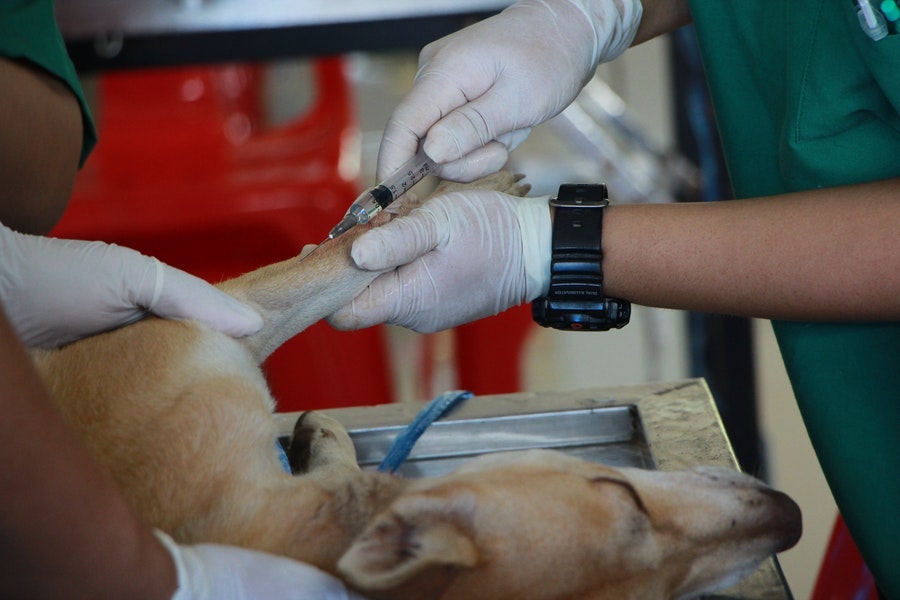
New Use Cases for Healthcare Simulation, Part 5: Veterinary Training
Simulation Training Labs Are Just as Useful for the Unique and Varied World of Animal Healthcare
Up until now, we’ve discussed several applications of our SimStation healthcare simulation solution in medical, nursing, emergency response, and police environments. Of course, the common thread across these is that they are dealing with human behavior and physiology. This time, we’re going to explore the advantages of simulation for medical training for veterinary doctors, technicians, and nurses. The benefits of simulation solutions in veterinary medicine are similar to those for human medicine, and simulation allows for professionals to gain experience without harming live animals – after all, they can’t communicate what ails them.
Unlike working on humans, veterinary professionals will work on a wide variety of species, from typical household pets to birds, reptiles, farm animals, and even wildlife. Veterinary simulation labs can accelerate knowledge and decrease the anxiety of learning and working with different physiology and anatomy.
SEE ALSO: New Use Cases for Healthcare Simulation, Part 3: Wet Labs
Targeting Multiple Levels of Skill Sets
As in human healthcare training, various levels of skills training can be targeted. The levels of skills for medical technicians, nurses, physican’s assistants, and doctors are progressively more complex. Veterinary nurses and technicians can train in diagnostic procedures, immunizations, and other routine care. Veterinary doctors will develop deeper skills in diagnostics, animal husbandry, and surgery.
Over two thirds of U.S. households own pets, with 70% of those being dogs. Dogs visit vets about twice a year on average, and the vast majority of vets in the country are dedicated to pets like dogs and cats. While veterinary techs and nurses don’t require the same level of expertise and knowledge as vets, they are often the points of contact for pet owners and must be knowledgeable about procedures and explaining them. Simulation training can help these professionals better understand them, how they affect the animals, the risks, medical severity, and more.
Animal Manikins
Human manikins in simulation have enabled low-risk and low-pressure training scenarios. Animal mannikins can also be used in training for veterinary professionals with remarkably realistic details. For example, anatomically correct canine heads come with simulated teeth, gums, and periodontal ligaments. The model allows for practice with nerve blocks, extraction, and intubation training as students navigate a realistic tongue, esophagus, and trachea. Dog spaying is a common surgery but not absent of risk for the animal. A canine spay simulator offers the ability to operate on a simulated abdominal wall and uterus.
Bovine and equine models can assist with training for working with these large animals. For cows, obstetrics, gynecology and reproductive issues are common areas for veterinary professionals to address. In horses, head and neck trainers help train for intramuscular injections and venipuncture, and GI tracks, and theriogenology models assist with intestinal and reproductive diagnostics and procedures.
The SimStation Solution
The SimStation simulation suite allows for detailed video capture of training sessions with actors and manikins to enable various levels of veterinary students and personnel to train on diagnostics, procedures, and surgeries. The system allows for video bookmarking for review, associated checklists for what to look for, and evaluation formats for trainers to grade students. As in human medical training, the debriefing support from integrated video, audio, and notes is invaluable in understanding how a situation was handled and pinpointing errors and omissions in procedures.
The SimStation solution allows multiple students to view simulations from different venues like classrooms, auditoriums, and debriefing rooms. Recordings are captured and can be saved and edited for future reference and teaching.
The Level 3 Audiovisual simulation solution includes everything an organization needs for veterinary skills simulation training. You get a high-quality camera for detailed video capture, state-of-the-art microphone and audio processing for clear sound quality, easy software control of the camera and system, and a tablet for the instructor for bookmarking, checklists, evaluations and debriefing sessions. The simulation solution toolset also makes it easy to create training videos with detailed commentary, bookmarks, and notes. In addition, Level 3 Audiovisual includes eight hours of onsite training with each system purchase. The Level 3 solution has the additional advantage of being installed as a portable or permanent system.
Level 3 Audiovisual delivers complete turnkey healthcare training simulation solutions with professional design, installation, training, and long-term support in Los Angeles, CA and across the U.S. If you’re interested in learning more about simulation solutions for your veterinary facility or training program, reach out to us online or click the chatbox below to connect instantly.

